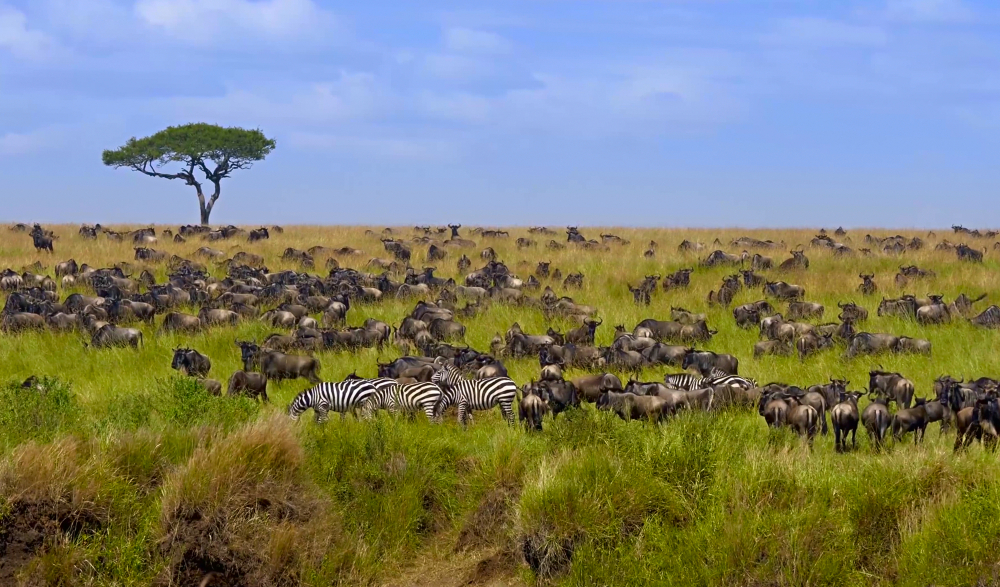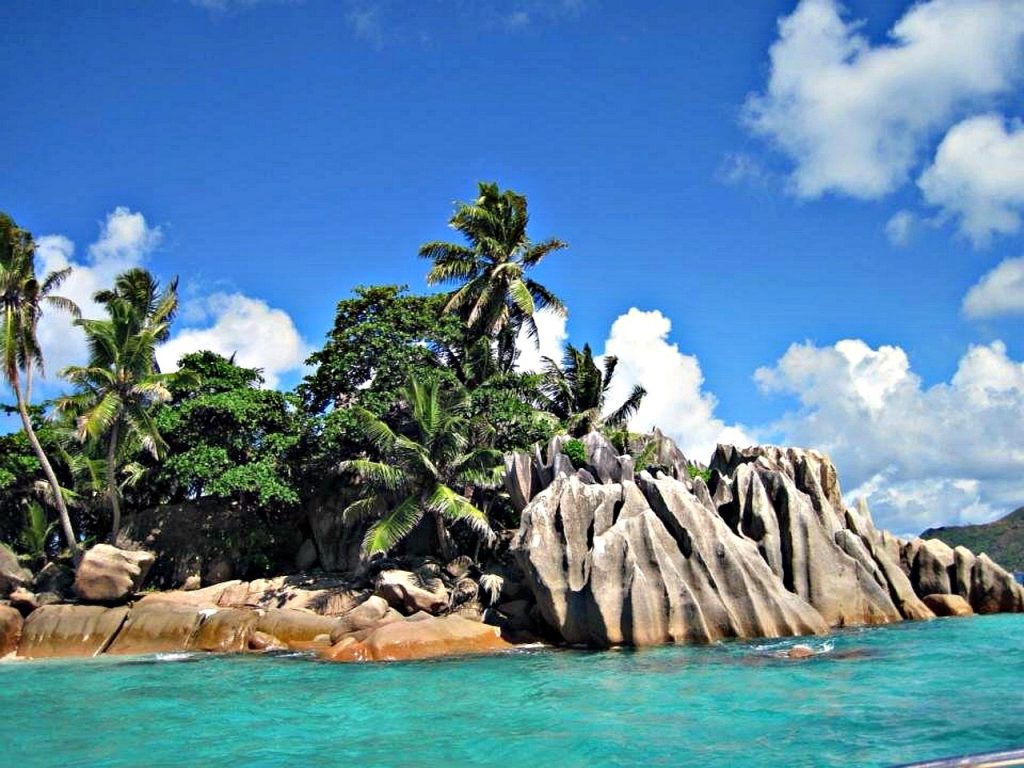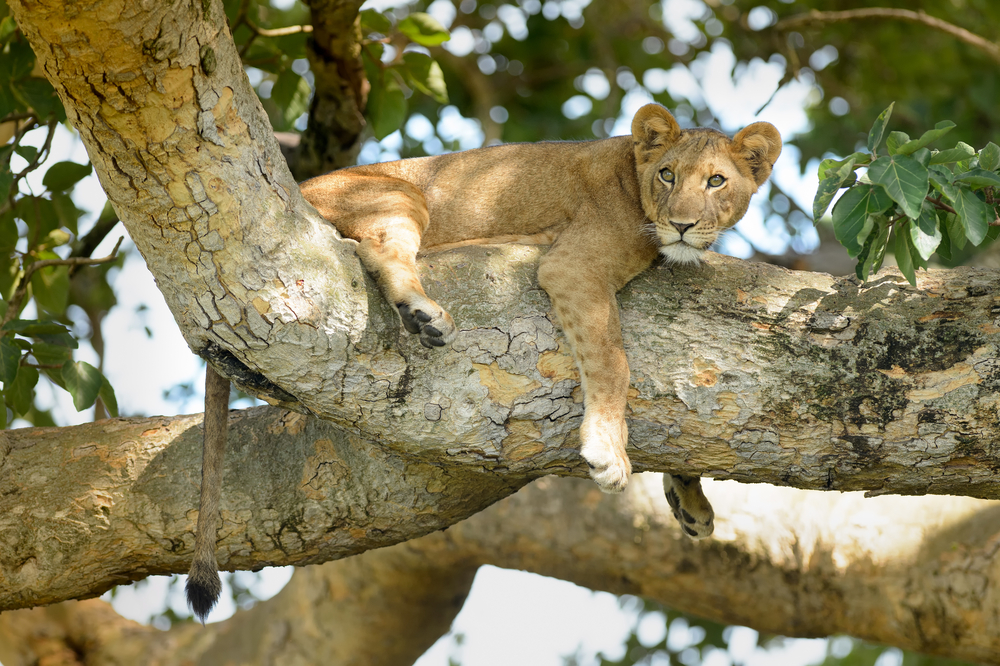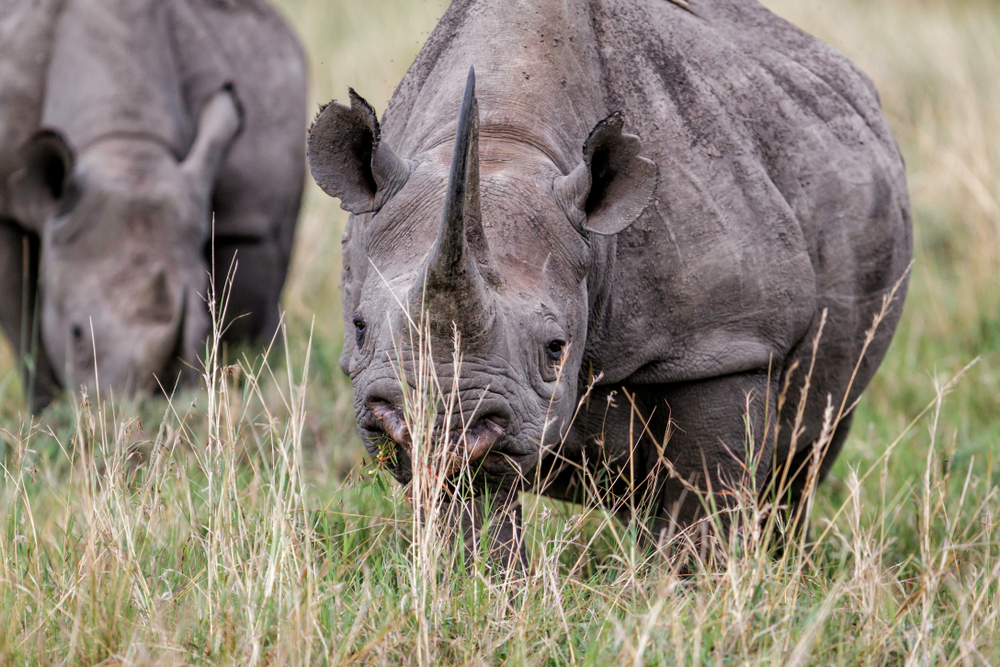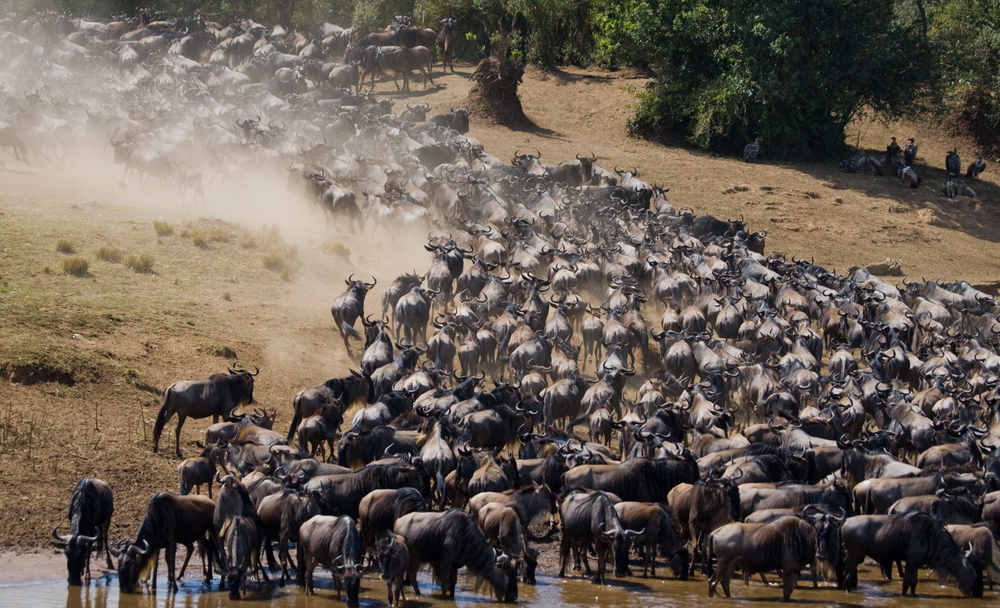Tanzania is home to three of Africa’s 7 Natural Wonders. Additionally, the country offers an abundance of wilderness experiences for travelers. Deciding the best time to visit Tanzania to explore this captivating country demands careful consideration.
The most important factors to consider include the weather, crowds, cultural experiences, wilderness adventures, and exclusive sightseeing opportunities that could be tied to the best time to go to Tanzania.
Visiting Tanzania based on Weather
The country’s climate varies across its regions, offering different experiences throughout the year. For comfortable temperatures and optimal wildlife viewing, the best time to visit Tanzania is during the dry season, from June to October. During these months, temperatures range from 60-80°F (15-27°C), creating ideal conditions for safaris and outdoor activities.
The rainy season, occurring from March to May, can bring heavy downpours and muddy roads, making wildlife spotting more challenging. Additionally, some lodges and camps may be closed during this period. This is a time of year you probably want to avoid coming to Tanzania.
Visiting Tanzania based on Crowds
To enjoy Tanzania’s wonders and wilderness safaris without the crowds, consider visiting during the shoulder seasons of January to February and November to mid-December. These months offer a more tranquil environment, allowing for a quieter and more intimate safari experience.
The first months of the year feature the birthing season of the wildebeests which can be an exciting time for safaris. The later part of the year with the months of November to mid-December, the watering holes are more sparse sometimes making it easier to find wildlife gathered around or near these sources of water.
The dry season running from June through October is the preferred time for safaris. The earlier months tend to be busiest making the best time to come visit Tanzania the months of August through October. This also provides an opportunity to witness the migration crossing the Mara River into Kenya.
Discover Tanzania’s Cultural Life
Immersing yourself in Tanzanian culture is a highlight of any visit. Engage with local communities, celebrate traditional festivals, and savor local cuisines. Events like the Kilimanjaro Marathon in February and the Zanzibar International Film Festival in July offer authentic glimpses into the country’s vibrant traditions.
Tanzania hosts a variety of iconic cultural events that celebrate its rich heritage and traditions. Here are 7 to 10 of the most prominent annual cultural events that take place across the country:
- Karibu Travel & Tourism Fair – Arusha (June): The Karibu Travel & Tourism Fair, held in June, is one of the largest tourism events in East Africa. It showcases Tanzania’s tourism offerings, including safaris, cultural experiences, and eco-tourism initiatives.
- Sauti za Busara Music Festival – Zanzibar (February): The Sauti za Busara Music Festival, celebrated in February, brings together musicians from across Africa for a vibrant celebration of music and cultural exchange. The festival takes place in Stone Town, Zanzibar.
- Nguvumali Cultural Festival – Iringa (July): The Nguvumali Cultural Festival, held in July, is a showcase of the Hehe tribe’s traditions. It includes traditional dances, music, storytelling, and demonstrations of ancient rituals.
- Bagamoyo Arts Festival – Bagamoyo (September): The Bagamoyo Arts Festival, taking place in September, celebrates visual arts, music, dance, and theater. It aims to promote local and international cultural exchange and appreciation.
- Zanzibar International Film Festival (ZIFF) – Zanzibar (July): The Zanzibar International Film Festival, typically in July, is East Africa’s largest film festival. It features a wide range of films, including African and international cinema, along with workshops and discussions.
- Ngorongoro Marathon – Karatu (April): The Ngorongoro Marathon, held in April, offers participants the chance to run through stunning landscapes and rural communities near the Ngorongoro Conservation Area. It promotes health and supports local initiatives.
- Makonde Cultural Festival – Mtwara (August): The Makonde Cultural Festival, celebrated in August, showcases the culture of the Makonde people through traditional dances, music, wood carving exhibitions, and storytelling.
- Kilimanjaro Marathon – Moshi (February): The Kilimanjaro Marathon, typically in February, attracts runners from around the world to challenge themselves against the backdrop of Mount Kilimanjaro. It includes full, half, and 5K races.
- Masai Cultural Tourism Festival – Arusha (December): The Masai Cultural Tourism Festival, taking place in December, offers a unique opportunity to engage with Masai traditions, including traditional dances, ceremonies, and visits to authentic Masai villages.
- Mwaka Kogwa Festival – Zanzibar (July): The Mwaka Kogwa Festival, celebrated in July in Makunduchi, Zanzibar, marks the Shirazi New Year. It involves playful confrontations, traditional rituals, and a massive communal feast.
These iconic cultural events offer an authentic glimpse into Tanzania’s diverse cultural tapestry. If you’re planning a visit to Tanzania, consider aligning your travel dates with these extraordinary festivals to experience the country’s rich heritage and traditions firsthand.
Exploring Tanzania’s Wilderness & Nature Experiences
For unparalleled wildlife encounters and nature experiences, the dry season from June to October is ideal. During this time, animals gather around water sources, offering prime opportunities for safari enthusiasts.
Sightseeing Activities
- Great Migration in Serengeti and Masai Mara (July to September): Witnessing the Great Migration, where millions of wildebeests and zebras traverse the Serengeti and cross into Kenya’s Masai Mara, is a once-in-a-lifetime spectacle. The largest part of the herd often crosses during the later part of this window and can even bleed over into October.
- Turtle Hatching in Zanzibar (February to September): Witness the magic of baby sea turtles hatching and making their way to the ocean. Conservation efforts on Zanzibar’s beaches make this a unique experience.
- Calving Season in Southern Serengeti (January to February): The calving season sees the Serengeti plains come alive as thousands of wildebeest give birth to their young, attracting predators and providing thrilling game viewing.
Other Essential Timing Considerations:
- Mount Kilimanjaro Summit: If you’re considering summiting Africa’s highest peak, the best times are during the dry months of January to early March and June to October.
- Zanzibar Beaches: For a relaxing beach getaway, visit Zanzibar during the dry season from June to October or December to February. The coastal waters are clear, making it perfect for snorkeling and diving.
- Tsetse Fly Concerns: In certain regions like Tarangire National Park and parts of the Northern Circuit, tsetse flies are more prevalent during the wet season (from November to May). Wearing appropriate clothing and using repellents can help mitigate their presence.
In conclusion, the best time to visit Tanzania is directly connected to your preferences and the experiences you seek. Whether you’re captivated by wildlife safaris, cultural celebrations, or the allure of Mount Kilimanjaro, Tanzania offers a range of possibilities throughout the year.
By evaluating these factors, you’ll be well-prepared to embark on a memorable Tanzanian journey tailored to your desires and the country’s offerings.

